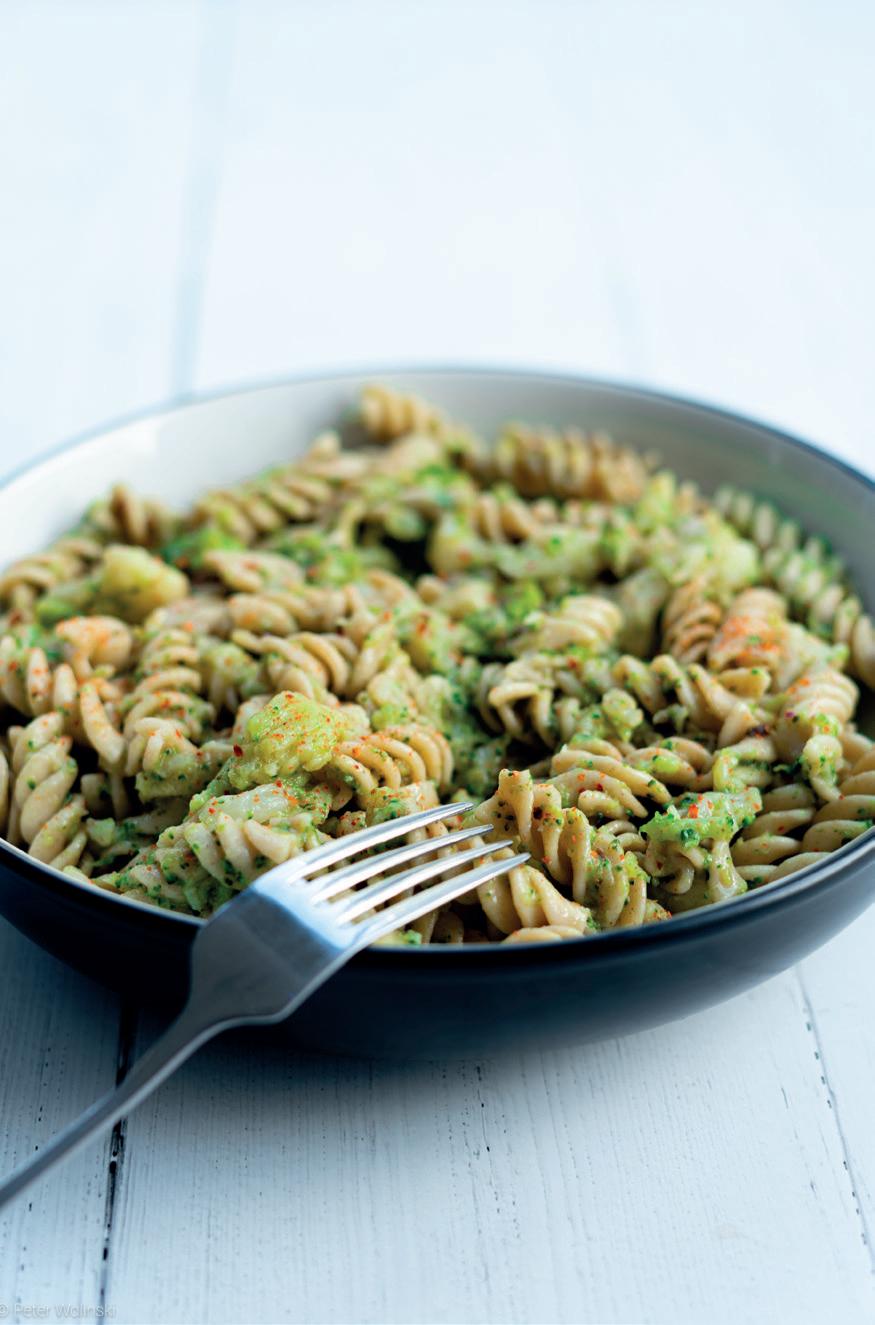
4 minute read
16 Frozen vs fresh
TRANSPORTATION The match here is played on the road. According to the Produce Marketing Association (PMA) the UK currently imports about 85% of fresh vegetables from the EU, mostly by road or air. This can have a significant impact on the environment. A recent study by The Guardian revealed that a flight from London to Rome and back can produce more carbon emissions than some 19 countries in the world. Thanks to the durability of frozen products, most of these are imported to the UK by boat. Shipping via sea can reduce up to 20% of CO2 emissions, which means that frozen foods have a much more sustainable means of transportation. The score is... FROZEN! 1-0

Advertisement
NUTRITIONAL VALUE The myth of fresh foods being more nutritional isn’t completely mistaken. Dr MacTavish-West, professor of Plant Physiology and Biochemistry, explains that during the process of blanching - cooking the vegetables at really high temperatures for a few minutes and then putting them in cold water to cool, before freezing them - the product can lose some nutrients. However, this is also true for fresh products, as Dr MacTavish-West explains when cooked fresh, products lose the same nutrients as when they are being blanched, making no difference whatsoever to the nutritional value of the two products. A goal to each! 2-1 to frozen
FROZEN vs FRESH THE VERDICT
Frozen vegetables are generally considered cheaper and more convenient for quick meals, while fresh products are thought to be healthier and tastier. But what’s actually the best option to save our planet and some pennies in the process?
FOOD WASTE Frozen and fresh foods both result in some sort of waste, unfortunately. However, the difference lies in where the food gets wasted. A fresh product gets wasted at home, where potato peel and onion skins go straight into the bin together with the rotten beetroots you forgot to cook last week. Frozen products, instead, produce all of their waste at the start, where it can be collected and reused for making juices, creating stock cubes or feeding animals. It’s also very difficult for frozen foods to go bad within a short period of time, which means even less waste and more thriftiness.
Frozen get another 3-1

PRODUCTION Here comes the tricky one. In terms of production, both can be unsustainable. Frozen products can use a lot of energy through the process of blanching and freezing, while fresh products can cause really high emissions for transportation. This, however, wouldn’t be the case if the fresh products were locally sourced. Buying products from our local areas can greatly reduce CO2 emissions. A study conducted for the C.S. Mott Group for Sustainable Food Systems showed that conventional food distribution can be responsible for five to 17 times more CO2 emissions than locally sourced food. So, in other words, if you buy local, the carbon footprint of fresh products is reduced. Fresh scores *but only if local* 3 -2 to frozen
PRICE
If you want to be thrifty, you have to look at the price, and in this case the tags say it all. In a study conducted by Dr MacTavish-West, the price comparison was found to clearly in favour of frozen foods. A mixed pack of frozen vegetables costs around £2.19/kg while the same amount of fresh produce from the whole veg costs around £2.96/kg. In the case of pre-prepared fresh vegetables, the price can go up to £4.40/kg giving us a clear winner once again.
Another goal for frozen. Looks like we have a winner…

FOOD FOR THOUGHT THE FINAL SCORE FROZEN 4 - 2 FRESH [ ]
Being thrifty, sustainable and healthy has never been easier with frozen products. In the current climate emergency, every little change can make a difference and using more frozen vegetables in our meals can be an easy and sustainable way to save some money and reduce our carbon footprint.
TIP 1
Using frozen veg straight from the freezer will make sure that you are consuming all the nutrients that can be found in the fresh vegetables.
TIP 2 TIP 3
Make your shopping a good balance of inseason fresh products and off-season frozen products. With most fresh vegetables bought from local markets, you can chop them up and freeze them straight away and you can use them as you please.
Prep time: 5 mins Cooking time: 15 mins
Serves 2 100g frozen broccoli and cauliflower - 15p 3 garlic cloves - 5p 5g chilli flakes - 10p 160g pasta - 20p 1 tbsp olive oil Ingredients
50P
Method 1. Start with heating some water in a small pot. When the water reaches a boil, add some salt, the broccoli and cauliflower and cook for 6 minutes. 2. In a frying pan, heat the olive oil and lightly fry the garlic and the chilli flakes for a couple of minutes. 3. Once the broccoli and cauliflower are cooked, take them out of the water (but don’t pour the water away!) Add them to the garlic and chilli flakes but make sure to turn off the heat before you do so in case the oil starts to spit. 4. Turn the heat back on and let the broccoli, cauliflower, garlic and chilli flakes cook together. 5. Bring the water used to cook the vegetables to boil again. Add some more salt in the water before you put in the pasta. 6. Cook the pasta al dente and then add it to the broccoli and cauliflower sauce. 7. Finish off with a sprinkle of parmesan cheese on top and buon appetito!
FROZEN Broccoli and cauliflower pasta with chilli











